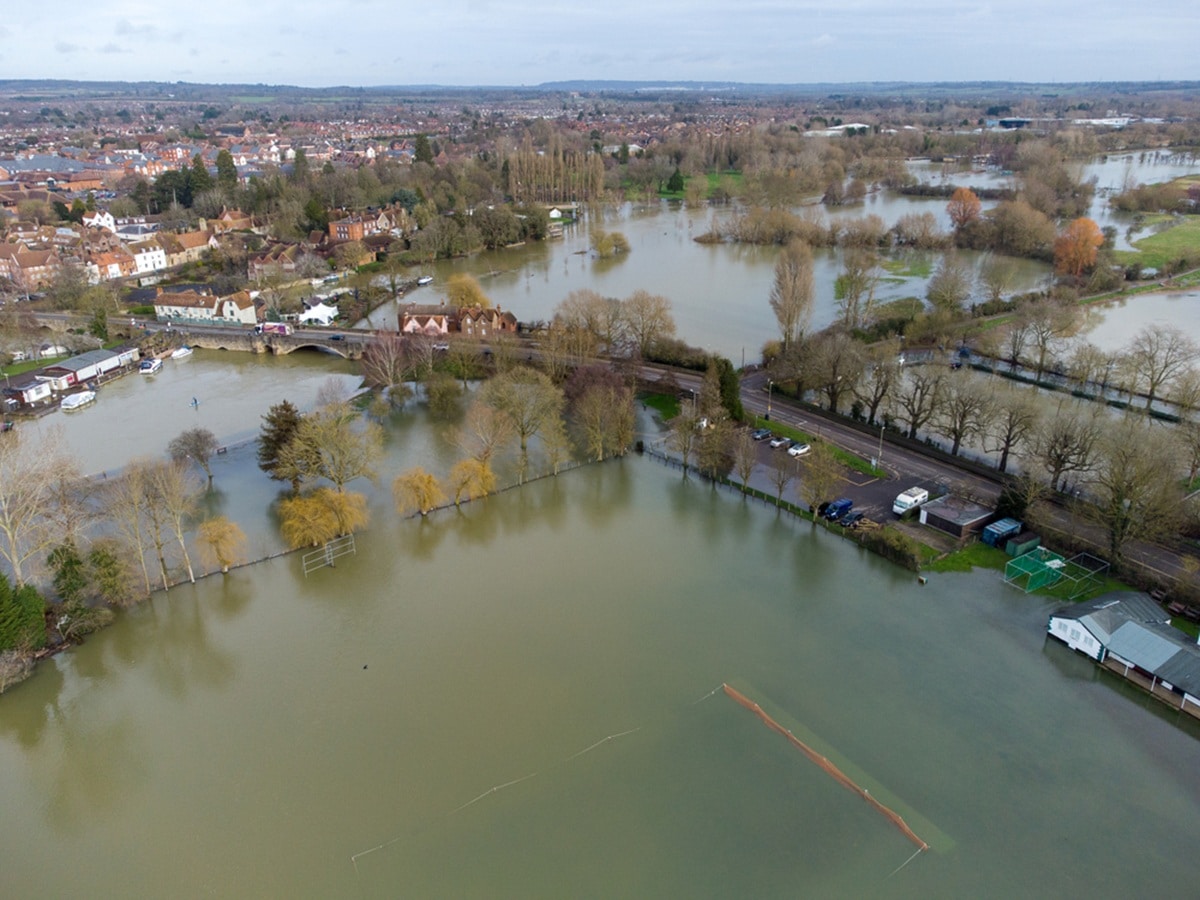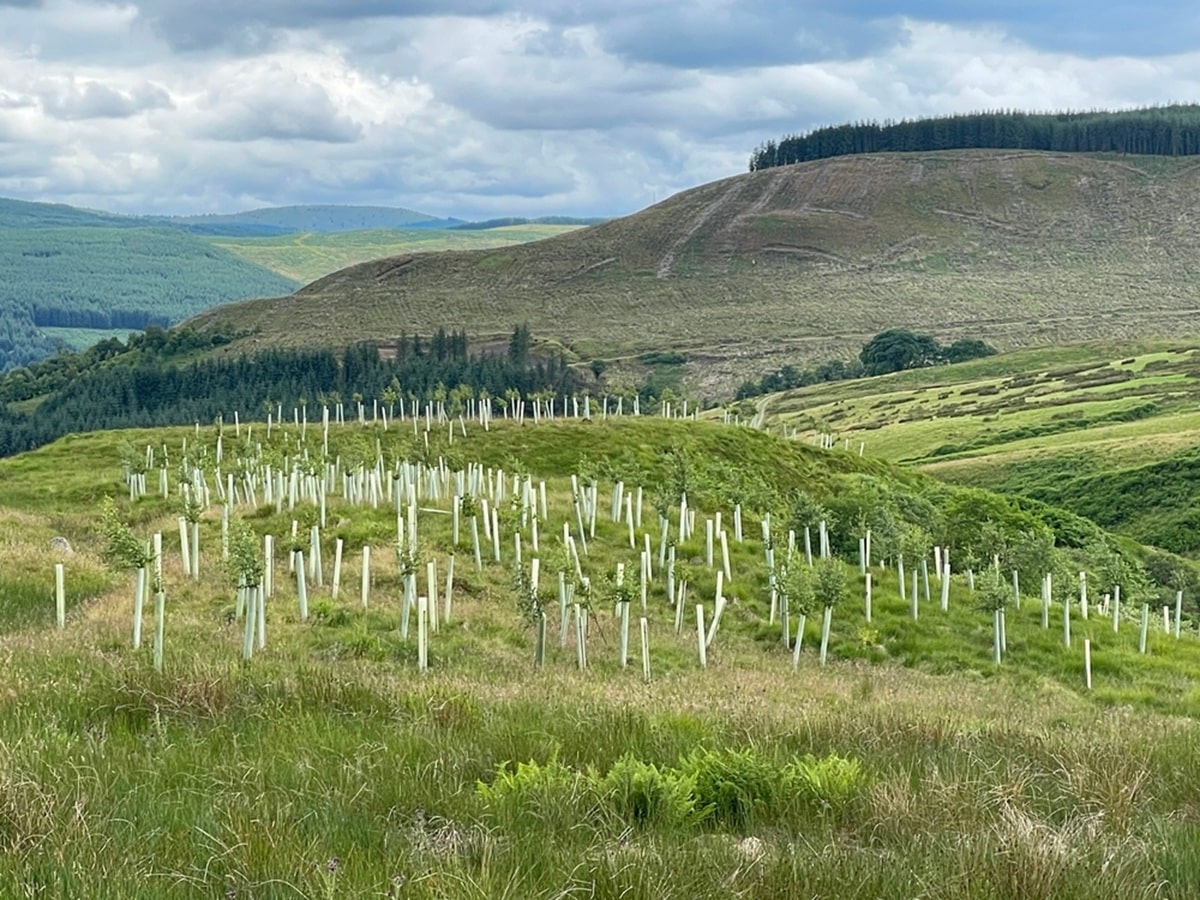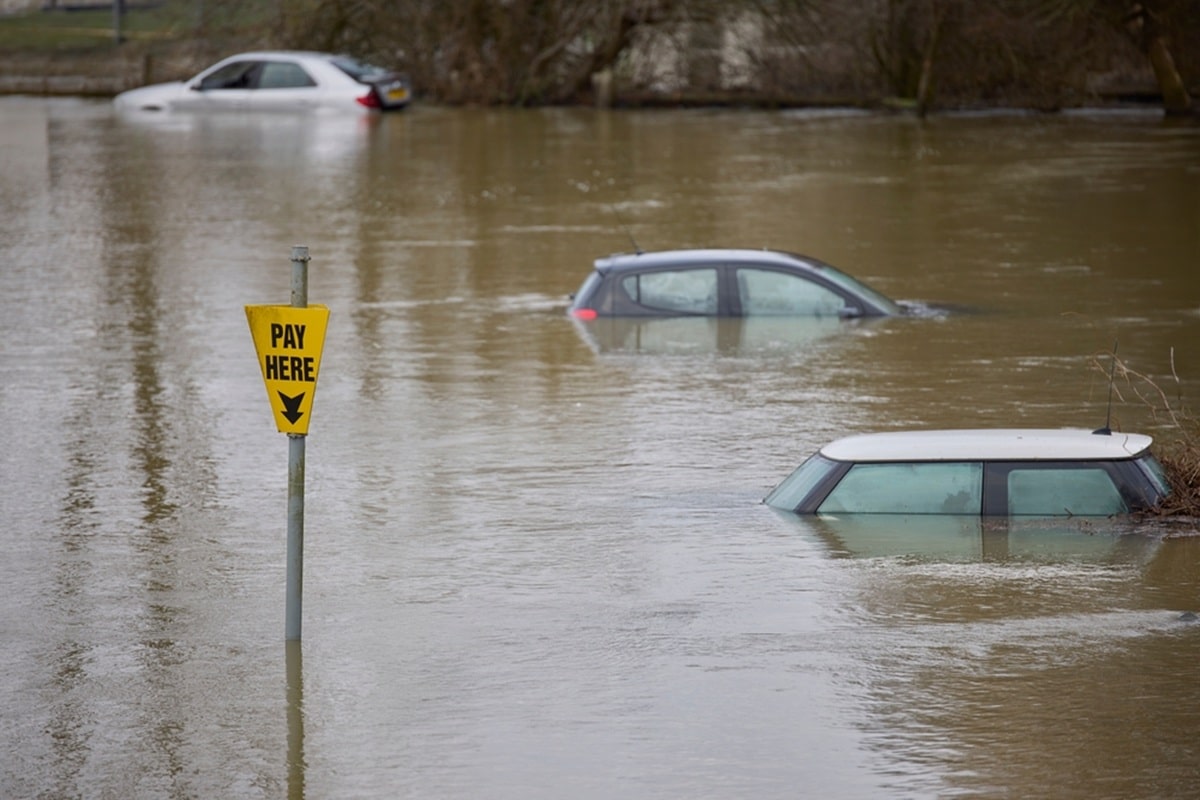
The sight of a swollen river bursting its banks and flooding a town, or fields transforming into lakes after heavy rain can be terrifying. However, when the elements seem to be against us, nature itself can come to the rescue in several ways.
Flooding is expected in many vulnerable parts of the UK and trees, woodlands, wetlands and “leaky” natural features are being used as part of a growing nationwide push to “slow the flow” of water and reduce flood risk. Yet, according to new research, not everyone is benefiting equally – and some of the very natural defences we rely on may be under threat.
Why Nature Can Help with Flooding
Trees and wetlands can play a powerful role in managing surface water flooding:
- As the Forestry Commission explains, trees intercept much rainfall in their leaves and branches, slowing down heavy rain so it doesn’t immediately run off over the soil. The benefits of woodland creation and forestry management are important factors in managing flood risk and schemes are underway in England, Wales, Scotland and Northern Ireland.
- Tree roots improve soil structure: they help make the ground more open and absorbent, helping more water soak in. Woodland soils in higher ground or low lying areas can act like a sponge, performing an important flood management service.
- The environment created by trees, deadwood and shrubs slows down surface water, delaying and reducing flood peaks.
- Leaf litter, root systems and understorey plants also help reduce soil erosion and filter out pollutants, improving water quality.
These are exactly the kinds of natural flood management (NFM) methods being promoted by environmental agencies in view of the increase in flooding forecast by the met office.

Big Investment – and Huge Promise
In February 2024, the UK Government announced a £25 million funding programme for 40 natural flood management projects across England. These initiatives are run by trusts, councils and local communities. Examples include:
- The Severn Rivers Trust, which will slow water using soil-management techniques, new woodland and hedgerows.
- The Ribble Rivers Trust, planning “leaky dams,” ponds, swales and vegetation to store water upstream.
Following the announcement of the project, Environment Agency chair Alan Lovell said the projects recognise “natural processes such as planting trees and creating wetlands” as central to flood resilience.
Floods Minister Robbie Moore added that using nature:
as an ally … helps restore the natural environment and protects homes … whilst boosting biodiversity.

The Problem of Unequal Protection from Flood Alert warnings
A recent study by researchers at Loughborough, Leicester and Lincoln universities (published in Nature Communications) raises an important concern: who gets flood protection from nature?
The study found that competitive funding for nature-based flood management (NbS) largely benefits more affluent areas. Communities that are socially or economically deprived, and often more vulnerable to flooding, are less likely to receive funding, because they often lack the capacity, expertise, or resources to apply successfully.
As Dr Tim Marjoribanks from Loughborough University put it:
We need to modernise [funding] … balance cost-benefit with fairness … build capacity in deprived areas … so nature-based defences reach where they’re needed most, not just where it’s easiest.
If natural flood defences only go where it’s simple to set them up, we risk leaving high-risk but less privileged areas badly exposed to the fear of flood alert warnings and long term flood risk.

New Guidance and Official Backing
Recognising the efficacy of woodlands in alleviating flooding, the UK published the first-ever NFM Practice Guide in 2022. This guide, produced by the Forestry Commission, Forest Research, Scottish Forestry and Natural Resources Wales, offers advice on how to design, manage and plant woodlands specifically to mitigate flooding.
Key recommendations from the guide include:
- Planting riparian woodland along riverbanks, flood plain, low lying land or areas where flooding is possible, to slow floodwaters and buffer erosion.
- Building leaky dams – structures made from fallen trees or woody debris – to store water and slow flow.
- Aligning forest operations (like harvesting) carefully so they don’t worsen flood risk downstream.
The guidance aligns with the UK Forestry Standard, which explicitly recognises that forests can reduce flooding by increasing soil infiltration, canopy interception, and soil variation.
Real-World Projects on the Ground
Several high-profile UK projects are already putting these ideas into practice:
- Riverbank planting: Over 3,000 hectares of new woodland are being planted along riverbanks in England. These trees not only slow floodwaters but filter out pollution and create wildlife corridors.
- Scottish guidance: In Scotland, new advice helps farmers use trees in natural flood management, including how roots, canopy, and deadwood all slow water flow.
- Catchment design: The North-West NFM handbook delivers practical recommendations like cross-slope tree belts and shelterbelts to trap run-off in farmland.

Why Trees and Wetlands Aren’t a Magic Bullet
Nature-based flood defence is powerful, but not without its limits and risks:
- Land Use & Planning Constraints: Not all landowners or planning authorities are on board with turning fields or hillsides into woodland or wetland, especially when it comes to food production or commercial forestry.
- Equity of Access: As the Loughborough study highlights, competitive funding models can shut out the communities that might benefit most from flood resilience measures.
- Management Needs: Woodlands must be properly designed and maintained. Poorly managed forests (or badly sited dams) can actually worsen flood risk, erode soils, or block waterways.
- Climate Risks to Woodlands: Flooding itself can damage trees. According to Forest Research, excessively wet soils can harm root systems and reduce the effectiveness of forests for flood management.
The Climate Connection: Floods, Trees and Resilience
The climate emergency has created more extreme weather events and flash flooding is becoming more frequent and intense in parts of the UK, including northern Ireland. Natural flood management is now widely seen not just as a one-time measure but as a climate adaption strategy, not least because it delivers biodiversity benefits, carbon storage, and community co-benefits wherever flooding is possible.
The Benefits of Trees:
- They evaporate a lot of rain, which helps keep soils drier and better able to absorb more water.
- Well-managed riparian woods filter out nutrients and pollutants that otherwise would degrade rivers.
- Strategic woodland creation in areas at risk of flooding helps slow the flow of flood water, helps wildlife and can help absorb some of the extra carbon in a warming world.
The Risk to Nature-Based Defences
Even as we look to trees for flood defence, the very system supporting this work may undermine it:
- Flood alert flooding: funding fairness. If competitive schemes only favour wealthy areas, then the communities most vulnerable to flooding may not be able to benefit from nature’s protection.
- Scale and ambition: Some fear that despite big headlines, the actual scale of tree-planting or wetland-creation is still too small to make a major impact in many catchments or vulnerable urban areas where flooding is possible.
The Loughborough-led study urges a rethink in how nature-based projects are funded: it states:
We need to embed equity into tender design … support under-resourced communities … monitor who benefits and where.

What Can Be Done and What’s Already Working
Here’s how natural flood defences are being strengthened in areas affected by flooding (and how they could work better):
- Boost funding and support for disadvantaged communities
- Simplify the grant application processes
- Provide technical help to write bids
- Prioritise communities at highest risk of current flood warnings, long term flood risk and least resourced
- Scale up well-designed NFM projects to cover flooding
- Continue the £25 million NFM funding programme through 2027
- Encourage more projects that plant riparian woodland, build leaky dams and restore floodplains
- Use new forestry guidance
- Apply the UK Forestry Standard Practice Guide for flood risk
- Work with Forest Research to ensure new woodland designs maximise flood benefit, soil infiltration and biodiversity
- Monitor, adapt, and share learning
- Track how well NFM interventions actually reduce flood risk in areas affected
- Report on social equity of project outcomes (i.e., which communities benefit)
- Use nature-based flood resilience schemes as living laboratories for climate resilience
Why This Matters for Everyone
- Nature AND people: Natural flood defences don’t just protect homes and communities, they boost wildlife, create green spaces, and help clean rivers.
- Resilience for the future: As the climate changes and we experience rising rainfall levels flood risk and the cost of flood damage, NFM is not a luxury but a necessity.
- Equity counts: It’s not enough to build solutions, we need to make sure they reach the people who most need them.
Working with Nature
Met office predictions of extreme weather and environment agency flood warnings mean that the UK is bracing for increased incidences of heavy rainfall and flash flooding. More flooding has also been blamed on blocked drains, extreme heat, water companies and coastal erosion.
Whether the main impacts will result from coastal flooding in areas where sea levels are rising and high tides are experienced, rising river levels, flooding on low lying land or designated flood plain, it will affect vulnerable residents as well as local authorities and emergency services.
The costs of dealing with long term flooding are high, especially if man made solutions are widely used such as flood barriers, as well as the Flood Re scheme, the joint government and insurance industry initiative to provide insurance for properties at high risk of flooding. As a result, the shift toward nature-based methods of dealing with flood water is already underway. The £25 million funding, new woodland guides, and science-backed planning are all signs that Britain is taking flood risk seriously: not just with concrete walls and hard engineering, but with a flood plan involving living systems.
Trees, woodlands and wetlands don’t just slow floodwaters: they restore ecosystems, store carbon, filter water, and make landscapes more resilient.
But the challenge now is to scale fairly and make sure that everyone is included in nature’s safety net. If we design, fund, and manage these natural defences equitably and intelligently, we can build a future where both people and nature are safer and more stable when the next severe flood warning is issued.



